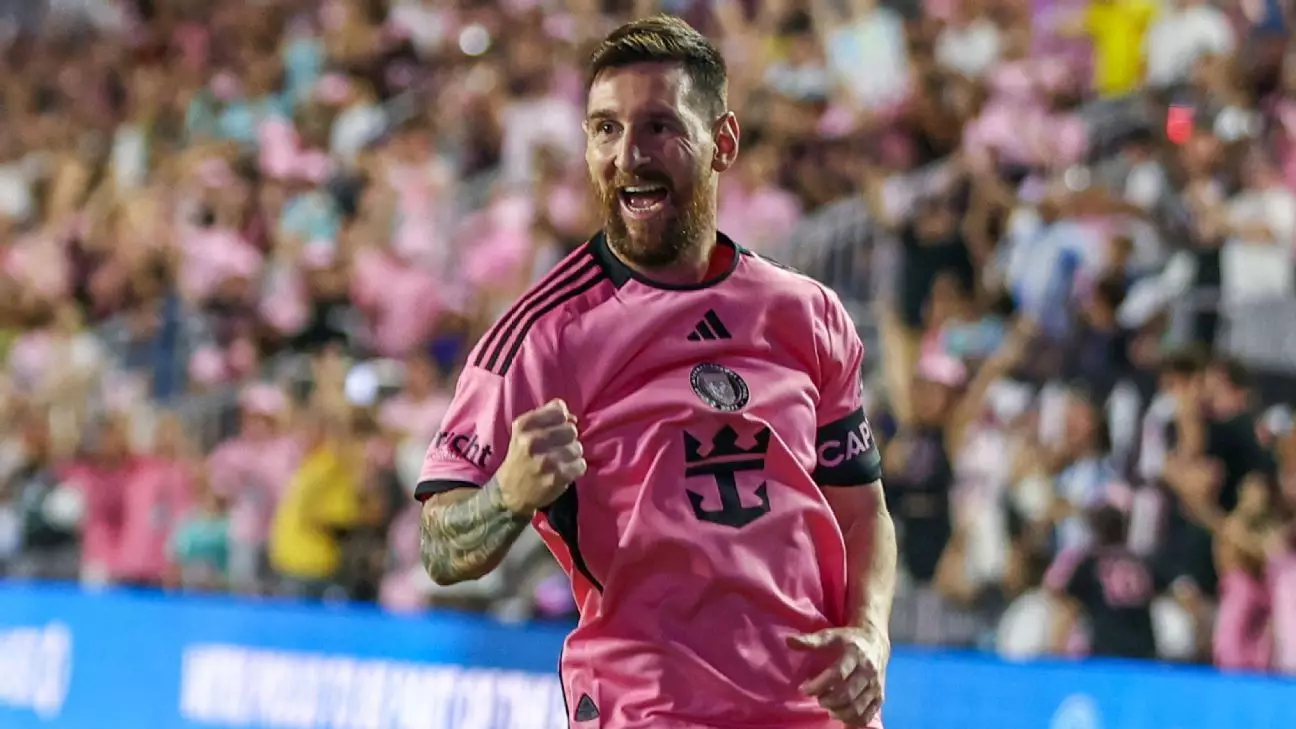As Major League Soccer (MLS) continues to grow in popularity and the financial backing it receives from owners multiplies, the financial landscape for players is evolving dramatically. The recent release of MLS player salary data by the MLS Players Association (MLSPA) indicates a significant increase in average earnings across the league. This change is largely influenced by star players like Lionel Messi, who has brought unprecedented attention and investment to his team, Inter Miami.
Lionel Messi’s arrival in MLS has been nothing short of transformative. Under contract until the end of 2025, Messi’s guaranteed annual compensation hovers around an impressive $20.4 million. However, Miami’s co-owner, Jorge Mas, has suggested that due to additional sponsorship deals and revenue-sharing agreements — particularly from the league’s partnership with Apple TV — Messi’s total compensation could be in the $50 million to $60 million range. This puts Messi’s pay scale at a level surpassing the combined salaries of 22 other teams in the league, which illustrates his monumental impact not only on his team but on the league’s financial structure overall.
Miami’s success on the pitch has also mirrored this financial investment. The team recently clinched the Supporters’ Shield for the first time, achieving a record 74 points in the regular season, cementing their status as a formidable contender in the league. Highlighted by Messi’s extraordinary performance, including an 11-minute hat trick against the New England Revolution, Inter Miami’s record spending of $41.7 million reinforces the burgeoning financial arms race within MLS.
The financial metrics following the release of the latest player salaries are encouraging for the league as a whole. The average guaranteed base compensation for players climbed to $596,226, marking a robust 9.7% increase from the previous year’s average of $543,207. Meanwhile, the median guaranteed base salary rose to $308,375, an uptick of 9.3% from the prior figure of $282,125. Such increases reflect a broader trend within the league; salaries at the bottom of the scale are also seeing considerable improvements.
The collective bargaining agreement (CBA) currently in place, which extends to the end of the 2027 season, has played a critical role in fostering these upward salary trends. The fourth-year cooperation between MLS and the MLSPA signals a commitment to enhancing player compensation, ultimately aiming to create a more sustainable financial model for the league.
While higher spending generally correlates with success in professional sports, MLS data shows that financial outlay does not always guarantee playoff appearances. Among the ten highest-spending teams, four failed to qualify for the MLS Cup playoffs. This reveals an essential nuance to the narrative that payroll equates to performance. Investing heavily in select star players requires a well-rounded team strategy and the right infrastructure to achieve consistent success.
In examining the broader market, Toronto FC trails only Inter Miami for the highest payroll at $31.81 million, while LAFC and LA Galaxy follow closely behind, showcasing that competition is fierce among teams vying for top talent. However, with CF Montreal standing at the bottom of the payroll ranking with $11.43 million, it highlights the drastic disparities within the league, which can influence team dynamics and expectations.
This past summer transfer window brought new talent to the league, further enriching its competitive landscape. Players such as Ezequiel Ponce and Marcelo Hartel, with total compensations of $2.8 million and $2.2 million, respectively, signify the pathway for emerging talent to find a place within MLS. The arrivals of established names like Marco Reus (LA Galaxy) and others indicate a broadened appeal of MLS as it enhances its global vision.
Ultimately, as teams like Inter Miami push salary limits and bring in international stars, the entire league is forced to adapt, rethink, and restructure its financial model. The continuous evolution will position MLS uniquely within the landscape of global soccer, providing ample opportunity for growth both on the field and in financial terms.
As we look ahead, the rising salaries in MLS represent both opportunity and challenge. By nurturing homegrown talent while simultaneously attracting international stars, the league is poised for ongoing growth. However, sustainable financial practices will be imperative to avoid pitfalls associated with hyper-inflated salaries. The careful balance of spending, team performance, and the attraction of a broader fanbase will be pivotal in defining the future paths of MLS.
With financial growth driven by star players and broader investment patterns, the landscape of MLS player compensation is evolving rapidly. As teams adjust their strategies to cultivate both competitive players and a loyal following, the league stands at a pivotal moment in its history. The trajectory set forth today will determine the long-term sustainability and success of Major League Soccer for years to come.

